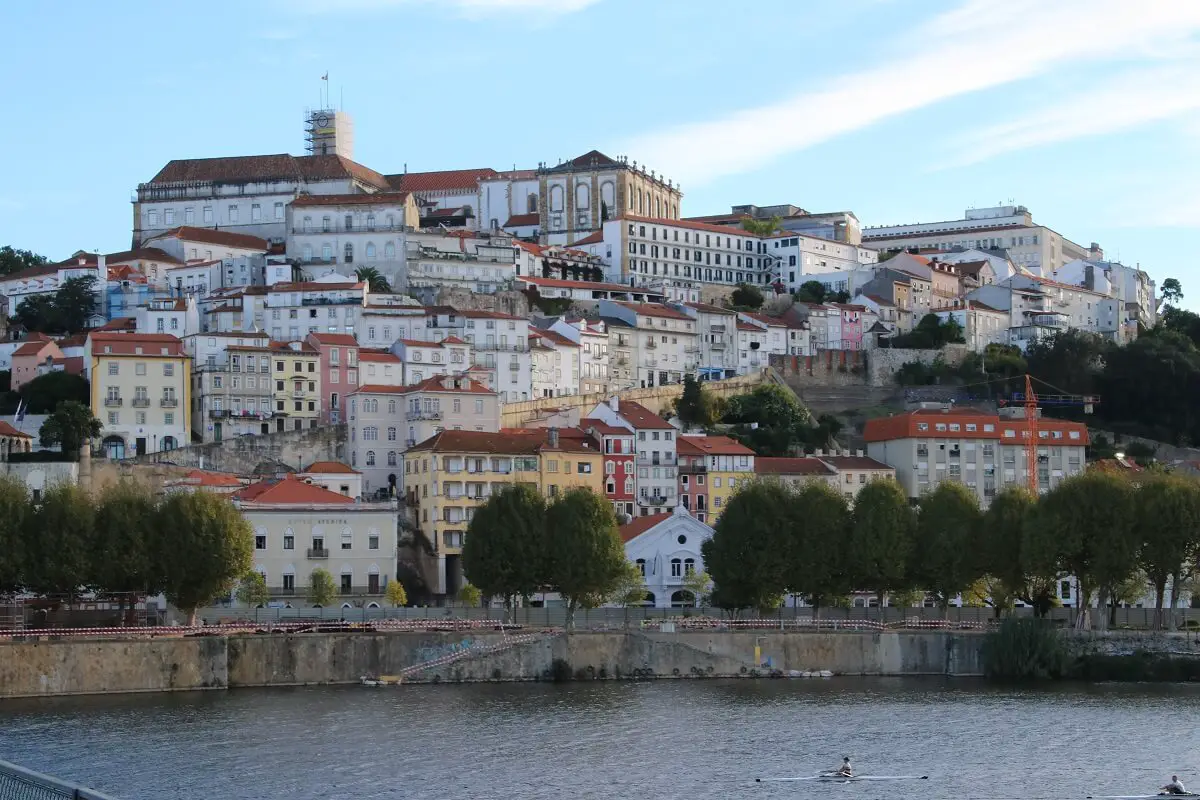
Located almost half-way between Lisbon and Porto, in Central Portugal, on the banks of Mondego river lays Coimbra, an amazing city to add to your list of places to see in Portugal. The city is mostly known for its UNESCO World Heritage university, the oldest in the country and one of the oldest in Europe.
Coimbra is also an important economical center and offers tourists a large amount of boutique shops, elegant cafes and an amazing food scene. The center of the Coimbra in divided in two, the lower part and the upper part. High on the Alcaçova hill, above the Mondego river stands its historical heart. This is also the place where most impressive churches and world-class museums stand, around the university.
The first five kings of Portugal were born and buried in Coimbra. This was once (12th and 13th century) the first capital of the Portuguese people and the royal atmosphere can be still felt on the medieval alleys, in its churches and lovely parks. Romantic Coimbra is also famous for its own fado, that originated at the university.
What I liked most about Coimbra was the abundance of activities and places to see. Being an university town for centuries, everything seems to be geared toward students and young people. Of course, the prices are not so high either. Overall, proud Coimbra offers an authentic Portuguese experience, it is pretty compact and far less visited than Lisbon and Porto.
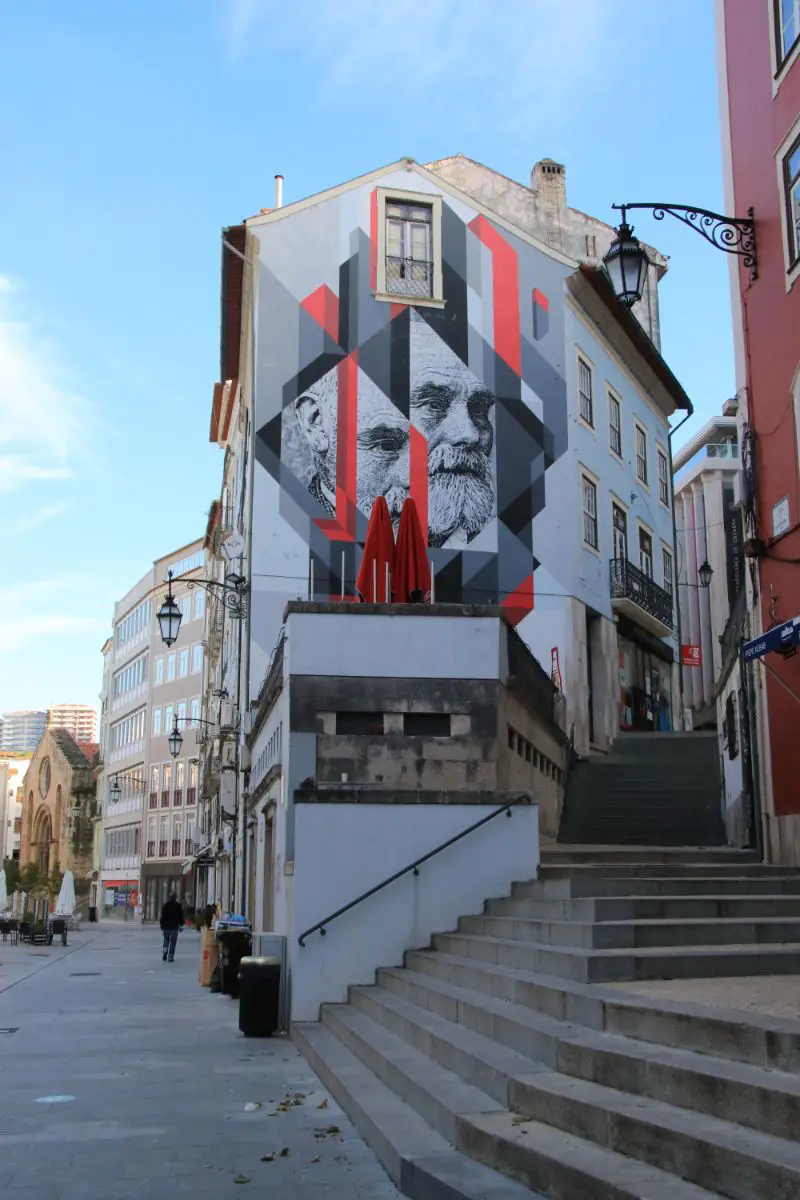
Is Coimbra worth visiting?
Although lesser-known, Coimbra is well worth a visit as one of the most beautiful places in Portugal. If you only have time for three places to see in Portugal, this charming city should be one of them. An overnight stay is also desirable in order to fully appreciate its beauties. But if you have limited time and need to go farther, you should focus on the best things to see in Coimbra, the University and the old town.
READ ALSO: 25 STUNNING PLACES TO VISIT IN PORTUGAL (+MAP)
How much time do you need in Coimbra?
It’s possible to visit Coimbra as a day trip from either Porto or Lisbon, but I truly believe that a few hours wouldn’t make the city justice. It deserves much more than this. My advice is to spend at least one day and one night in Coimbra. If you have more time, Coimbra also makes as a great base for visiting the surroundings.
How to get from Lisbon or Porto to Coimbra?
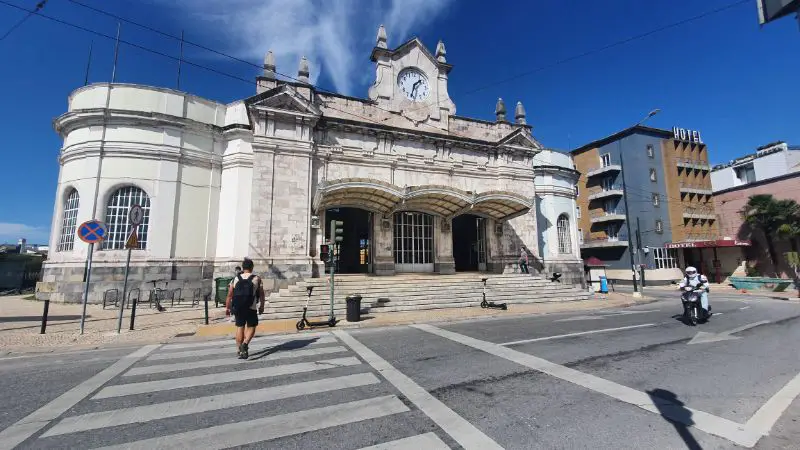
Porto’s International Airport is the closest flight hub to Coimbra. If you go on a road trip through Portugal, it will take around one hour and a half to drive from Porto to Coimbra. The journey by train takes more or less the same time. If you travel by car or train, the ride from Lisbon to Coimbra will take you a little over two hours. Bus services are also available. If you decide to go by train, keep in mind that you’ll first get to Coimbra B, where you’ll need to change and get the train for Coimbra. This route should already be included in your original ticket.
Getting around Coimbra
“The city of students” is hilly, not on the same line as Lisbon, but you’ll want to go a few times at the gym before getting there. This being said, the best way to get around historic Coimbra is still on your own feet. There are taxis and SMTUC buses available, which you might want to use to cover other areas of the city.
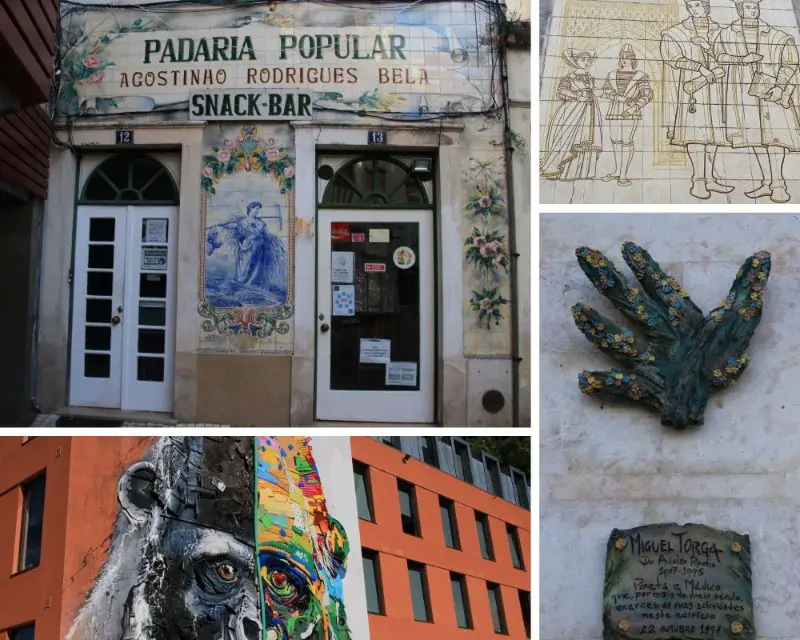
Where to stay in Coimbra
If you do follow my advice and stay overnight, you’ll need a place to recharge your batteries. Stay in a cozy hotel in Coimbra and explore this incredible city.
- Budget option – Quarto & Pasta Guesthouse – offers cheap rooms close to the main sights of the city. It is located right between Santa Clara a Velha and Portugal dos Pequenitos and you can see them both from a birds-eye view;
- Middle – Ibis Coimbra a comfortable hotel close to the old town that offers great views over the river;
- Luxury – Hotel Quinta das Lágrimas, an historical palace surrounded by majestic gardens. This is one of the most romantic places in Coimbra. It is also where Inès, the sweetheart of King Pedro I, was murdered at the order of his father.
Top things to do and see in Coimbra
Here’s our guide on how to spend your time in the captivating and unforgettable university town. There are a lot of tourist attractions in Coimbra. To make your job easier when designing the path you take, I also made a map of the top places to see in Coimbra.
Walk along Rua Ferreira Borges
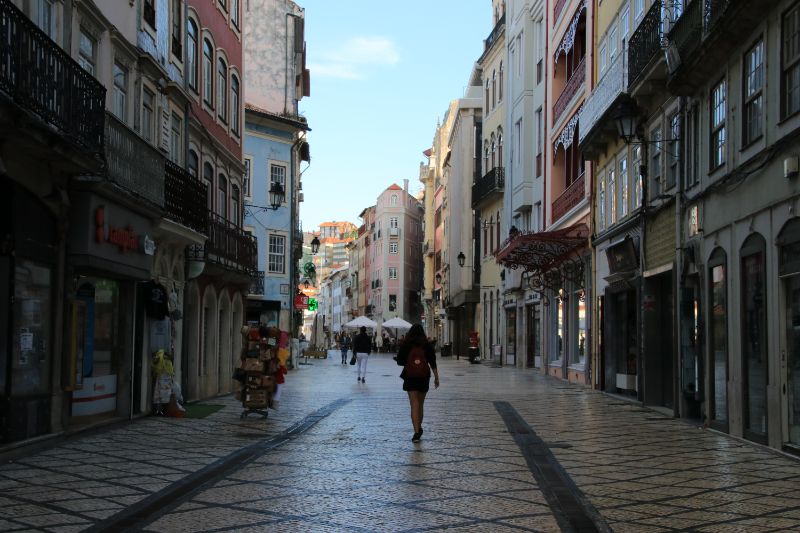
An integral part of any walking tour in Coimbra, Rua Ferreira Borges is the main street of the old lower town. It is paved and lined with souvenir shops and bakeries. You might even run into a live fado performance. Don’t forget to wear your most comfortable shoes!
Head to Praça do Comercio
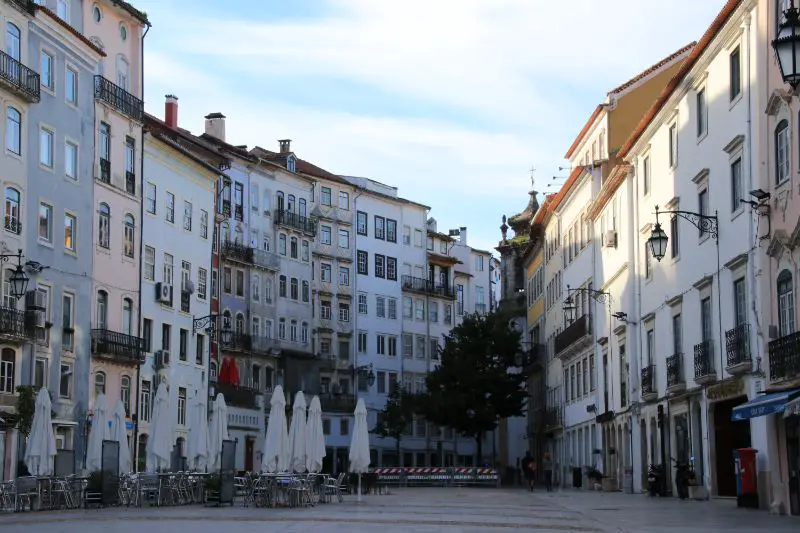
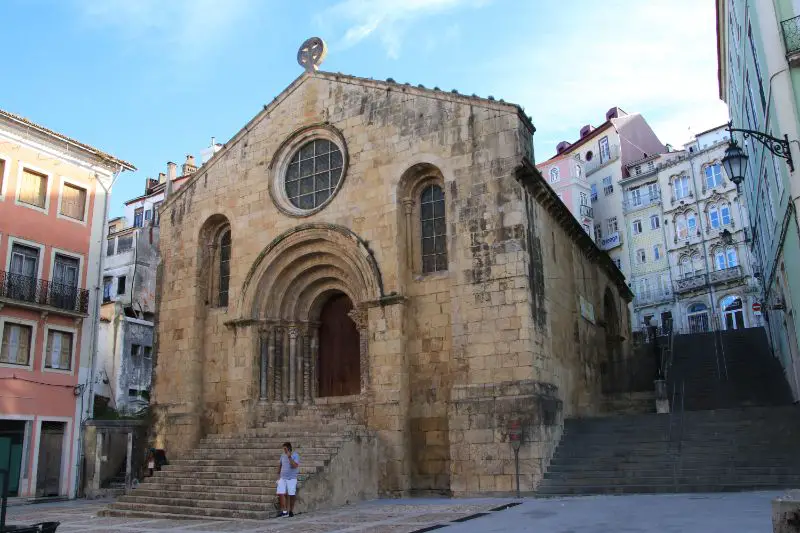
In the lower part of the historical city, you’ll find Praça do Comercio, with small souvenir shops, old buildings, statues, restaurants and bars. At the corners of the square, there are two less known churches, but still beautiful, Sao Bartolomeu and Sao Tiago. The origins of Sao Bartolomeu church go back to the 10th century, but it was transformed in the 12th and 18th. Inside the church, the main points of interest are the gilded woodcarved altarpieces in Baroque style.
Pass through Arco de Almedina and learn about the medieval city walls at Núcleo da Cidade Muralhada
There are fragments of the original city walls in various parts of the old town of Coimbra. However, if you want to learn more about them, the place to be is Arco de Almedina. This Moorish-style arch is one of the original gates of the old city. The oldest part of it dates back to the 9th century. Its tower hosts the Walled City Centre or Núcleo da Cidade Muralhada. Inside you can watch a short movie about the walls and see a model with their initial position. You’ll also find out where their remains are still visible.
Have a coffee at Santa Cruz Church and Cafe
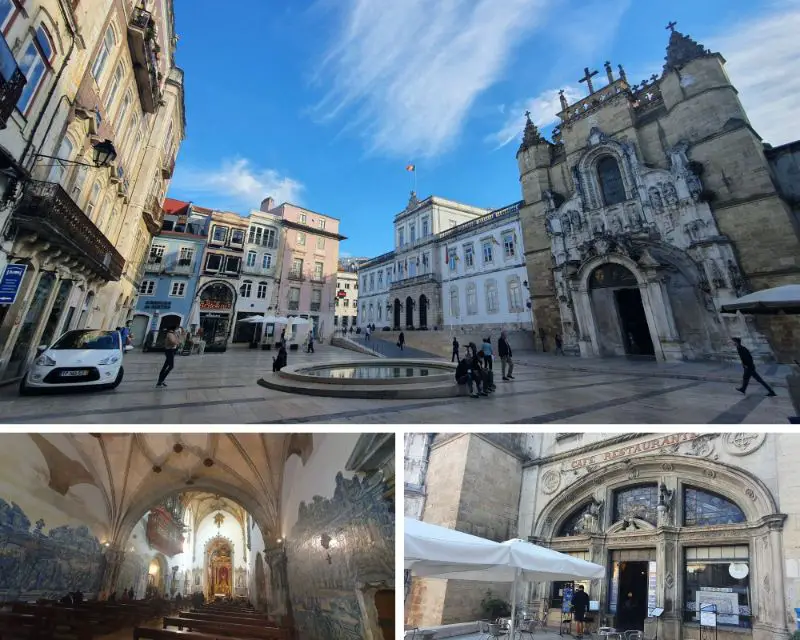
Santa Cruz Monastery is one of the most remarcable attractions in Coimbra. It was founded in 1131 and the first two kings of Portugal are buried within. Its facade is amazing, with fine scupltures and carvings. The walls of the current church are decorated with typical azulejos. These are similar to the ones in the cathedrals in Lisbon or Porto.
Cafe Santa Cruz was arranged into the former Church of São João, which dates back to 1530. The stained glass above the entrace is one of its highlights. Don’t miss the house specials, crúzios. These sugared almond cakes were created by nuns. Also check if there is any free fado show while you’re in town.
This is also the hub of all the twisted narrow streets. It is a lively spot all day long, where once could listen to some fado and smell the sweet aroma of roasted chestnuts.
Check out the yellow dome at Jardim de Manga
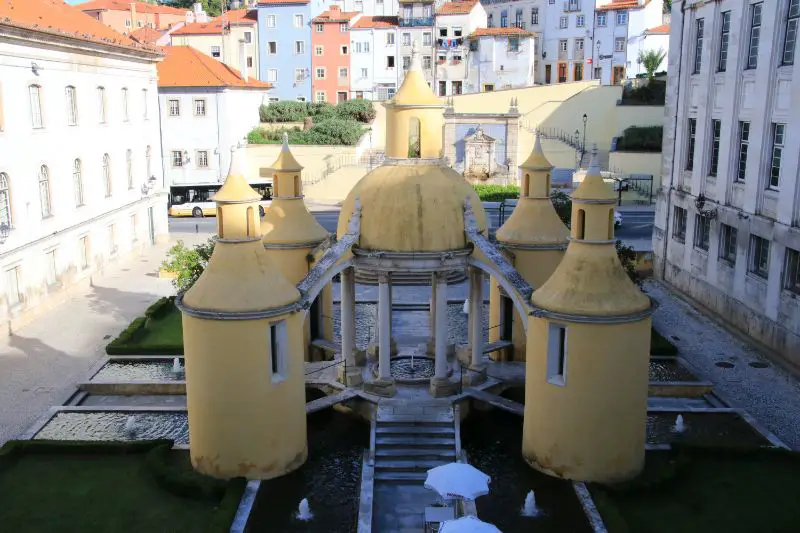
Right behind the church, there’s Jardim de Manga, a beautiful small garden with a fountain that symbolizes the rivers in paradise. This is the first example of Renaissance architecture in Coimbra and dates back to 1528. Back then is was part of Santa Cruz monastery. Legends say that King João III himself sketched the design of the ornamental fountain on his sleeve. Hence the name manga, which means sleeve.
Walk along UNESCO Rua Sofia
Coimbra University became too big for the space that it was initially allocated. After 1834, when the Portuguese monasteries were abolished, several convents on Rua Sofia were occupied by the university.
Spot the traditional student houses in Coimbra called Repúblicas

The republicas are another tourist draw and they literally have hundreds of years to show off. The traditional student houses originated in the 14th century, when the king asked for houses in the citadel to host the students and “good men” of Coimbra. Around 20 of the then built repúblicas still function nowadays as communal student houses similar to the fraternities in the United States. Each one has its own rules and is run by the students themselves. They can be easily spotted due to the signs and quirky ornaments. Unfortunately, rising rents mean that some of them are threatened with eviction.
Visit Coimbra University (Velha Universidade de Coimbra)
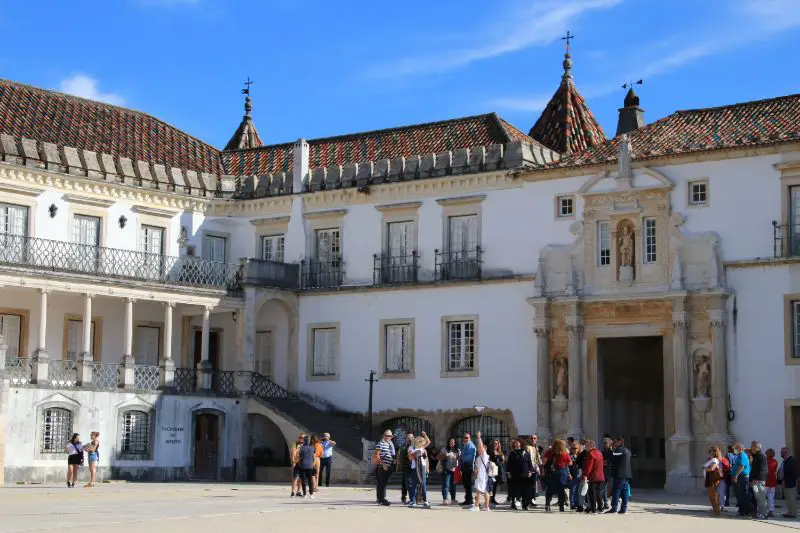
Rarely is an university one of the major touristic sights in a city, but the one in Coimbra has deep historical roots and is an UNESCO World Heritage site. The university, as an institution, was founded in 1290 in the capital city of Portugal. Thus, it is the oldest of its kind in Portugal and one of the oldest in Europe. It was moved from Lisbon to Coimbra in 1537.
The settling chosen was a palace complex with an elegant belltower, a sculpture-lined portico and the beauriful Paço das Escolas courtyard. All these can still be seen. Porta Ferrea, the main entrance to the courtyard, dates back to the 17th century. On its pillars, one can admire images and symbols related to the university.
But the most impressive place is the baroque library, Biblioteca Joanina, with its frescoed ceiling, exotic wooden shelves, 300000 dusty valuable books and colony of fly-eating bats. It is even considered one of the inspiration sources for Harry Potter. As a matter of fact, the uniform of the students is identical to the one used by the Hogwarts students. Under the library, there’s the old medieval prison, unique for the fact that the person that destroyed a book got the capital punishment.
READ ALSO: BOLOGNA -COMPLETE GUIDE TO THE SECRETS OF THE CITY
São Miguel Chapel is another attraction of the complex, with its impressive azulejos. The organ, a treasure by itself, is decorated with golden angels. It was built at the beginning of the 16th century, before the university was moved in the palace.
Sala dos Capelos is the old throne room. Currently, the most important academic festivities of the year are hold here.
The 34 meters tall clock tower from the 16th century offers some breathtaking birds-eye views over the city and the surroundings.
The university of Coimbra is definitely one of the most important sites to visit in the city. In order to find out the stories behind this rich ensemble of buildings, you should book a guided tour. Make sure to do it at least few hours in advance, especially if you want a specific time, as they sell out quickly.
Pray at Sé Velha (Old cathedral)
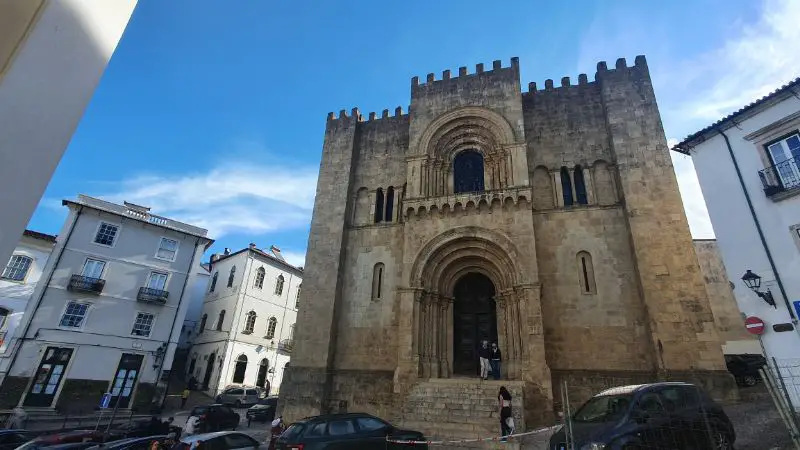
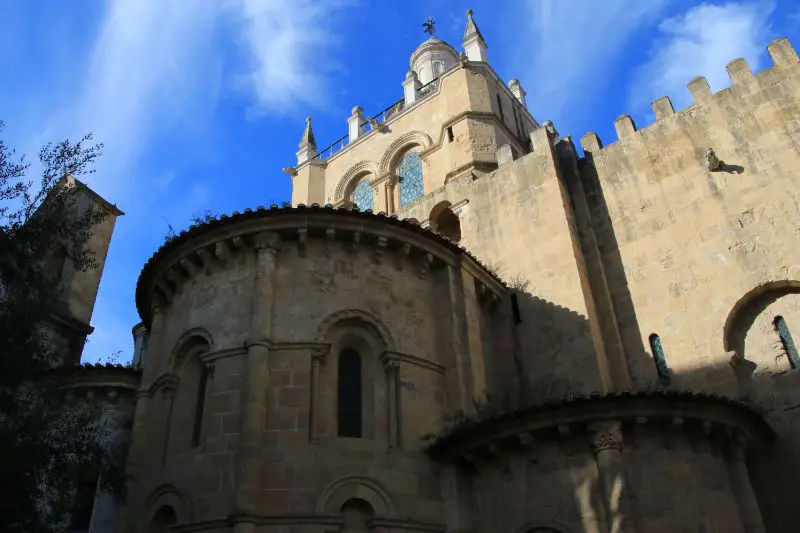
Another key attraction in Coimbra is Sé Velha, its majestic old cathedral that resembles a fortress. Built in 1184, it quickly became the coronation cathedral of the country. From an architectural point of view, it combines Moorish, Renaissance, Baroque and especially Romanesque features. The altarpiece inside is decorated with Romanesque floral and nature motifs.
Pass by Sé Nova (New Cathedral)
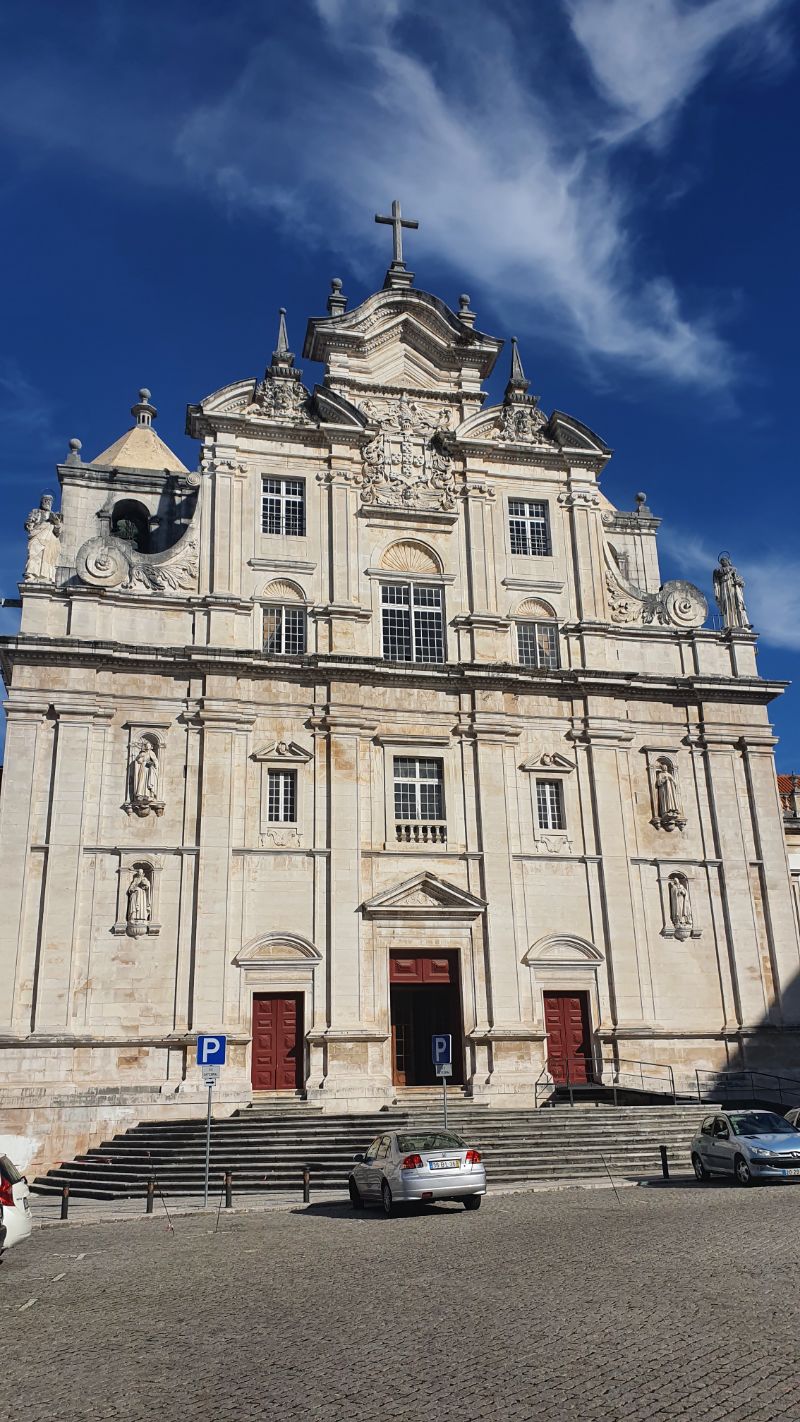
This cathedral was built by the Jesuits at the beginning of the 17th century. Thus, it is anything but new. Not long after the Jesuits were thrown out of Portugal, in 1759, their church was picked for the new cathedral due to its ample size. The extravagant Baroque facade is in contrast with the soberness of the Old Cathedral. Its interior is just as spectacular. Several ornaments were taken from the Old Cathedral in order to decorate the new one, like the 17th century choir stalls and the baptismal font. Sé Nova is certainly worth stopping by on your tour to see the main tourist attractions in Coimbra. Besides, it is right next to Machado de Castro Museum.
Learn more about Coimbra and Portugal at the National Museum Machado de Castro
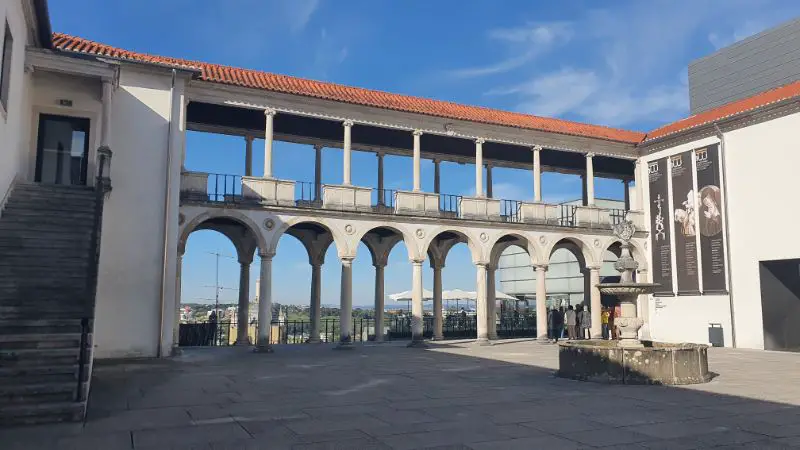
Recently renovated, the National Museum Machado de Castro displays a huge collection of exhibits. Roman artifacts, medieval statues and unique paintings, jewelry, vintage furniture, old manuscripts and ceramics are presented here. Some of the artworks date back to the 10th century.
Even more than this, the museum was built on top of the ancient forum of Aeminium. The cryptoporticus of the ancient Roman city once stood where Coimbra is today. The 2-story structure supported the old Roman forum, as the flat space at the top of the hill was too little. This way, it was possible to have the civic meetings there. The tunnels were mostly used to conserve food, as they were cool and dark. One can actually visit the 2000 years old remains of the cryptoporticus.
The restaurant and café also offers visitors fantastic views over Coimbra. Machado de Castro Museum was awarded UNESCO status.
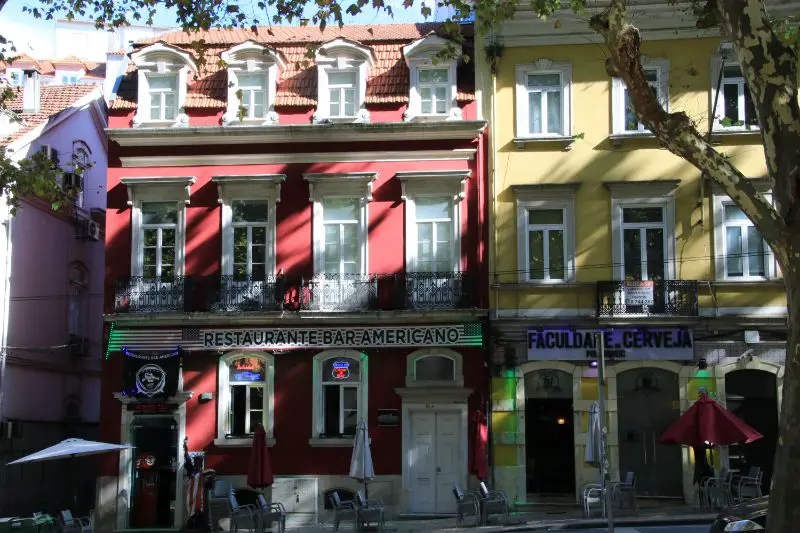
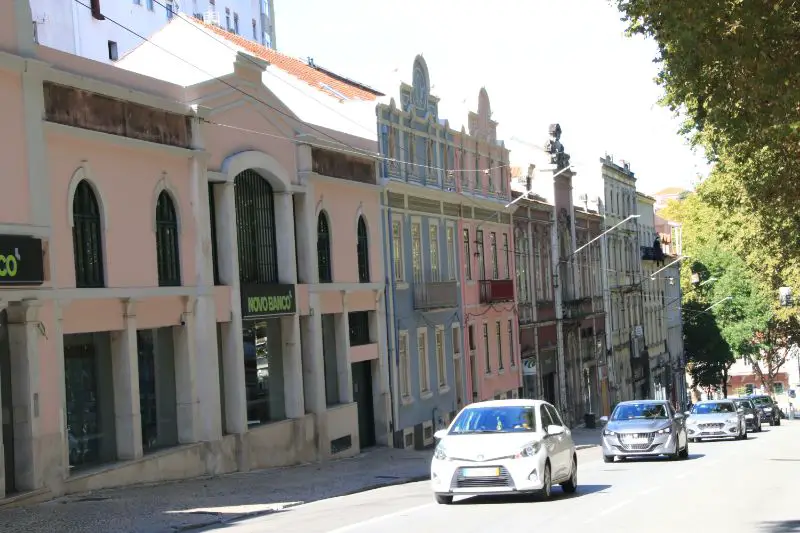
Have a drink at Praça da República
Praça da República is where students, professionals and tourists come together. Join them for a coffee at one of the local cafes. Most of them also serve cheap snacks – fried and croquettes. During the academic festivities, large groups of caped twentysomethings gather here to celebrate. The main boulevard that leads to Praça da República is Avenida sa da Bandeira, worth itself a look. On one side of the boulevard there’s also a building with drawings that depict moments of the academic life in medieval times.
Cross Jardim de Sereira
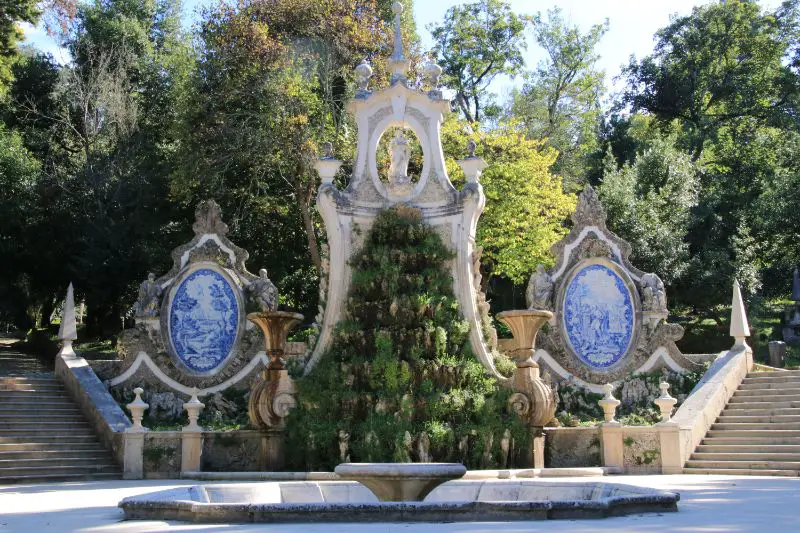
Right next to Praça da República is the romantic Jardim da Sereira. This is a tiny park but very charming. It’s one of the most beautiful parks we have seen during our one month stay in Portugal. The fountains, steps, azulejos and very old trees make it just the right spot to go for a walk with your loved one.
READ ALSO: TOP 15 TOWNS TO SPEND A ROMANTIC WEEKEND IN ROMANIA
Enjoy the beautifully furnished rooms in Casa Museu Bissaya Barreto
Just before the Arches of São Sebastião Aqueduct and the botanical garden stands the house of Fernando Bissayo Barreto. He was an university teacher, surgeon and philantropist. The garden of his house is full of statues and traditional Portuguese tiles. Even if you decide not to walk inside, taking a look at the artwork outside is still worth it. The interior has been preserved and visitors can see how a prominent character of the Coimbra society used to live.
See the ancient city aqueduct of São Sebastião

The Saint Sebastian aqueduct was built in the 16th century on top of a primitive Roman aqueduct. It supplied water to the citadel on the top of the hill and the upper city. If you follow the arches uphill, you’ll pass by the botanical gardens to the university. But I’d go through the arches into the botanical garden, another one of the great things to do in Coimbra, Portugal.
Explore the Botanical Garden
Rarely have I seen such a beautiful botanical garden. It must be one of the most attractive in Europe. Home to more than 1200 plant species, from eucalyptus to figs, Japanese pine trees, coral trees and exotic plants kept in greenhouses. It’s a must see in Coimbra. One might also notice some funny brown squirrels. The part I enjoyed the most was for bamboo forest.
This is the largest botanical garden in Portugal and dates back to the 18th century when the reform of Marques de Pombal took place. It original purpose was to support the teaching of medical sciences. St. Benedict Chapel, the old water cistern and fragments of the city wall can also be seen inside. Entrance is free.
Initially we thought about skipping it because of lack of time. We also thought it was just another botanical garden. But we got there while looking around for other sights and liked it a lot. It is now one of our top places to see in Coimbra.
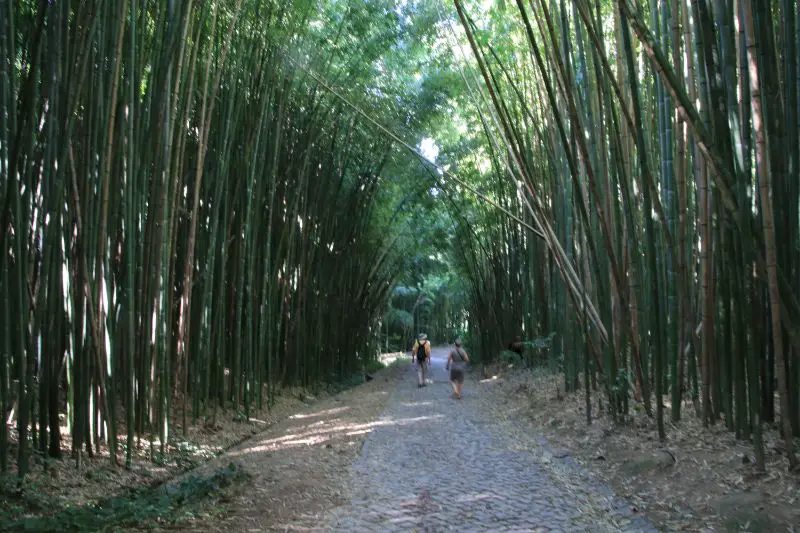
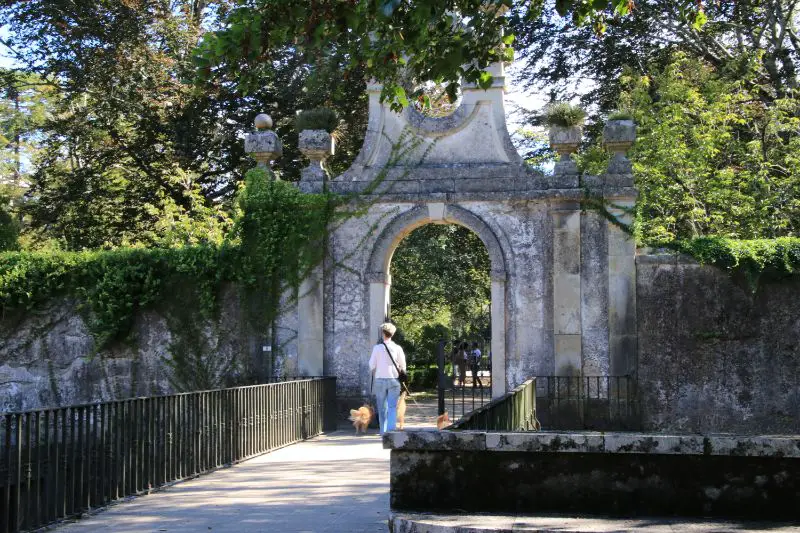
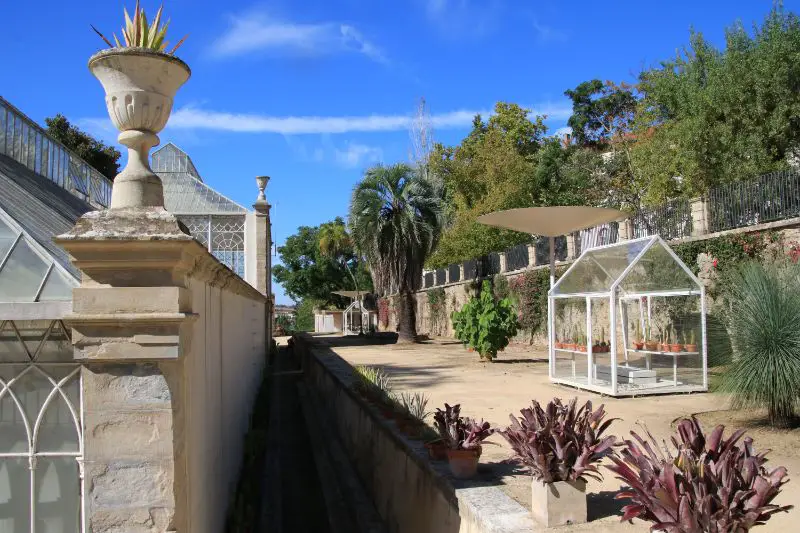
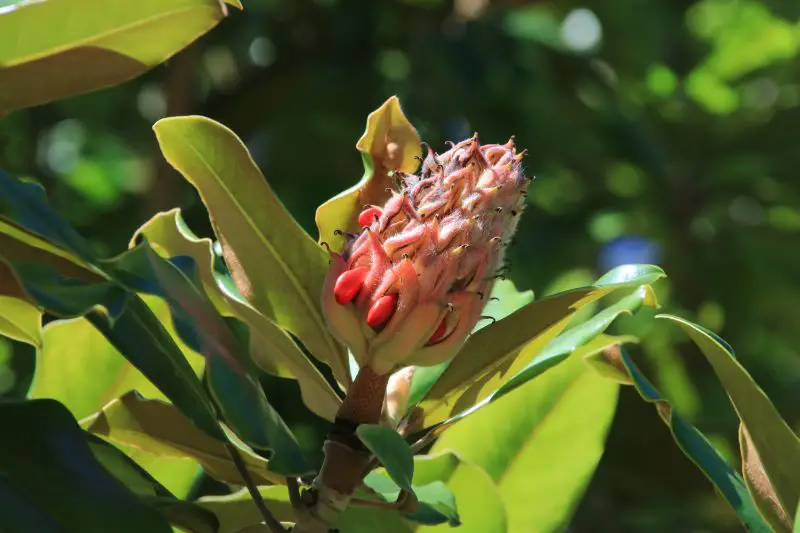
Cross Pedro and Inés Bridge in Parco Verde
After visiting Coimbra’s main tourist attractions, find your way to Parque Verde do Mondego, one of the most beloved green spaces in Coimbra. One can walk, run, cycle, try kayaking or stand-paddle. The iconic giant green bear is a magnet for children and adults alike.
Just above the park is Pedro and Ines pedestrian Bridge. This one offers some of the best views in Coimbra. The bridge itself is also stunning, lined with multi colored glasses that reflect the sunlight on the wooden boardwalk. After crossing the bridge, you’ll get to a tunnel decorated with creative graffitis.
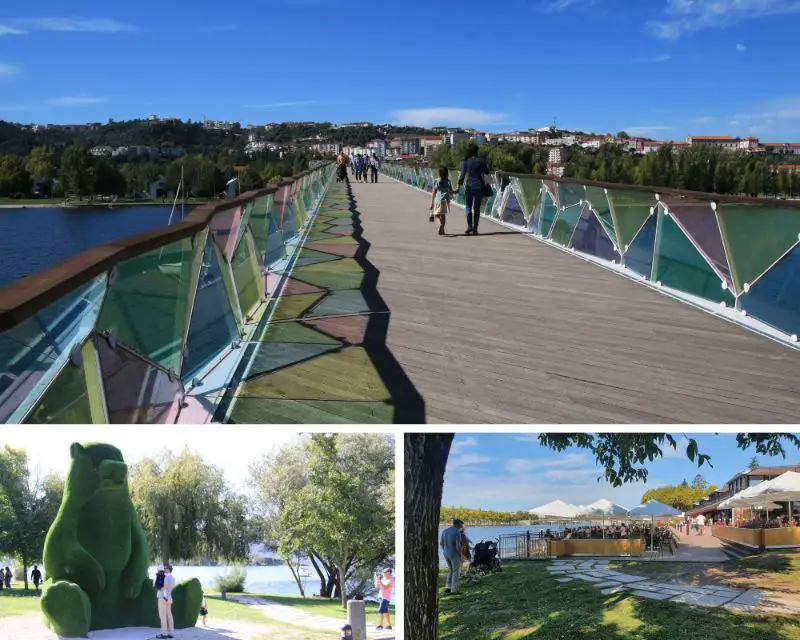

Find out the sad story of Ines and Pedro at Quinta das Lágrimas
The Portuguese version of Romeo and Juliet where Ines de Castro and Crown Prince Pedro I. Quinta das Lágrimas is strongly related to their tragic story. They used to hide in its gardens. But this is also where Ines was killed in 1355 at the order of his father, Afonso IV. It is said the actual murder took place close to Fonte das Lagrimas (Fountain of Tears). Another beautiful spot you should see is Fonte dos Amores (Fountain of Love). The villa is now a 5-star hotel, but its extensive gardens are open for the public. Next to it, there’s a huge golf court.
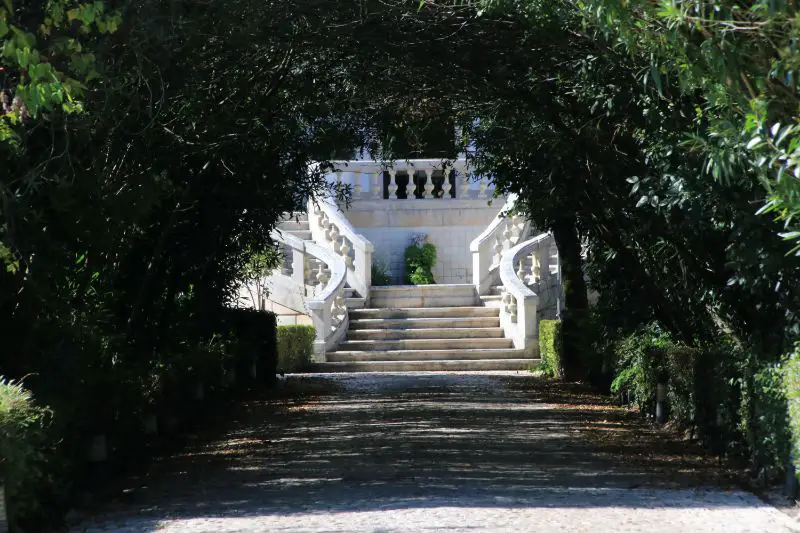
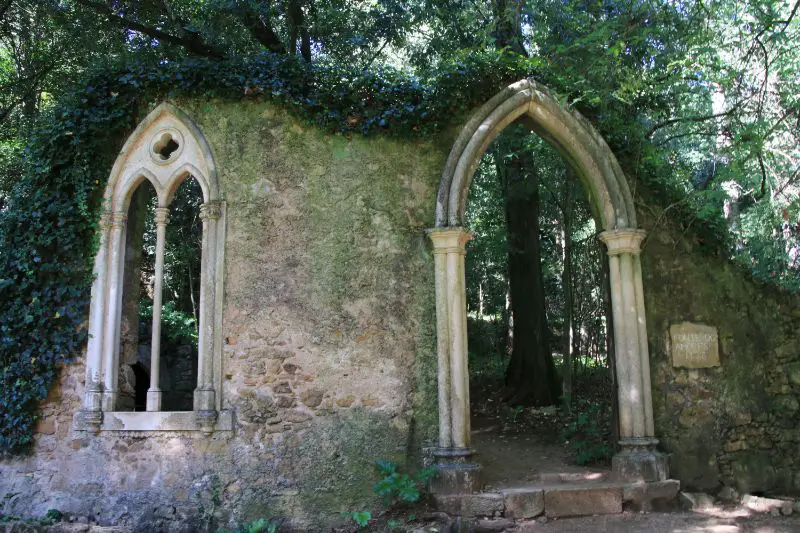

See the remains of Mosteiro de Santa Clara-a-Velha
It would be a shame to miss the partly sunk ruins of the Santa Clara-a-Velha monastery from the 13th century. Built on the south bank of the Mondego river, Santa Isabel, the widow of King Dinis, retreated there. She was also entombed in the church. However, after strong floods, it partly sunk in mud and the building was abandoned in the 17th century. The nuns moved to a new building on a higher ground, Santa Clara-a-Nova. They took the remains of the queen with them. The Gothic monastery was partly restored. Tourists can now visit it and find out more about its fascinating history. The golden sandstone ruins with the crumbling cloisters and dilapidated bell tower are a wonder to see.
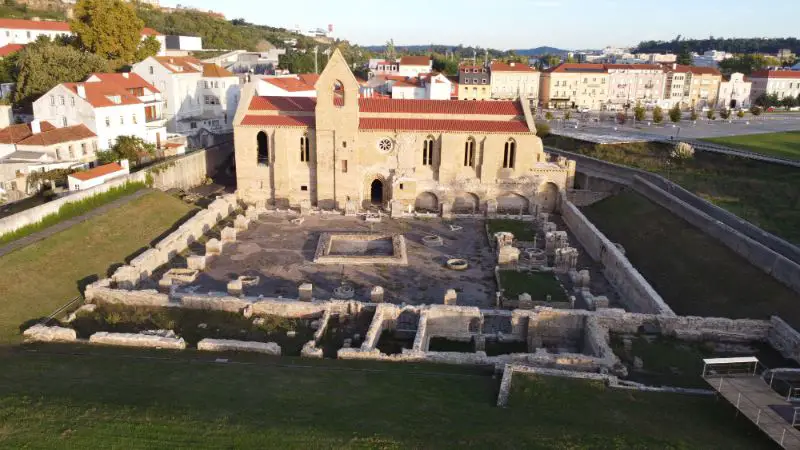
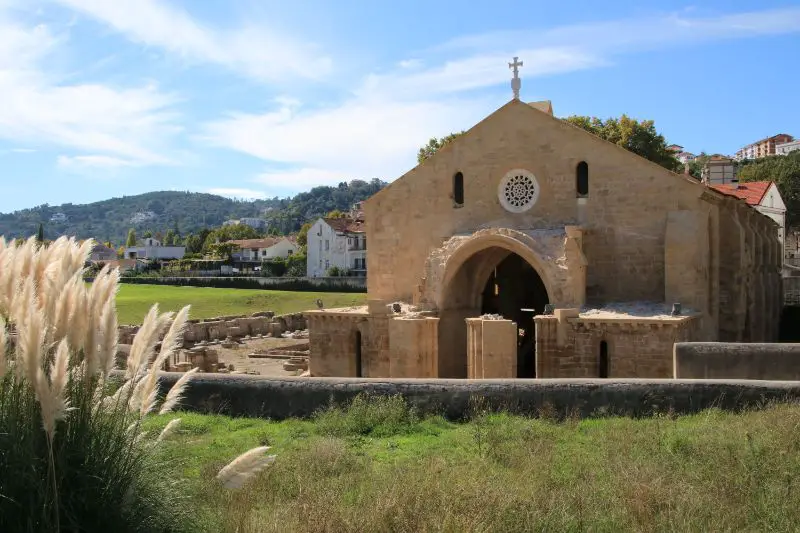
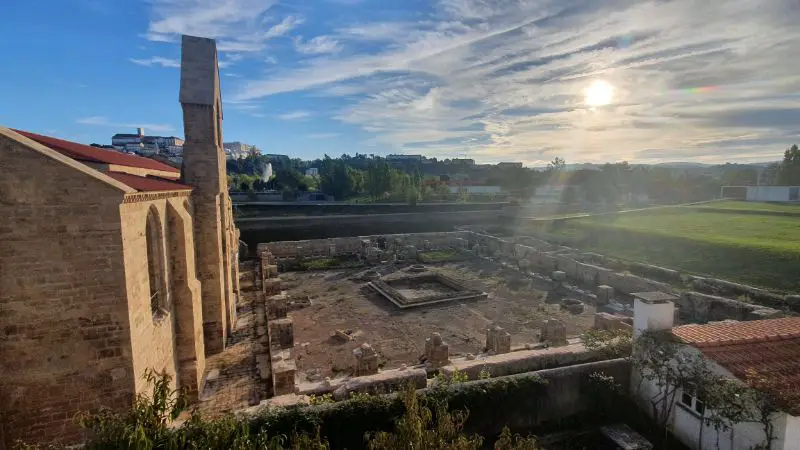
READ ALSO: 48 HOURS TO VISIT HANOVER, GERMANY
Fill in the gaps at Mosteiro de Santa Clara-a-Nova
Santa Clara-a-Nova was built in the 17th century in order to replace the old monastery submerged by the river. Inside, one can find the remains of Santa Isabel of Portugal, queen of the country for more than 40 years.
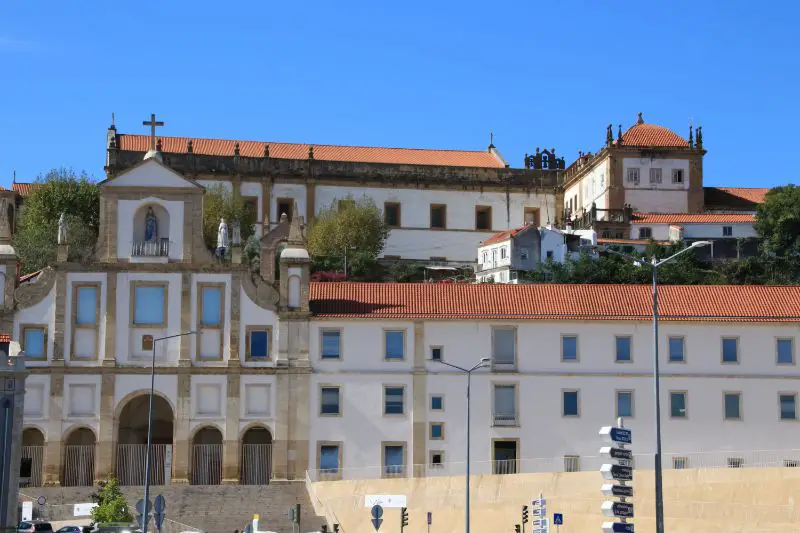
Have fun at Portugalia dos Pequenitos
Despite the name, which means Portugal for the little ones, children and adults alike are welcome to this theme park with miniatures of the most famous monuments in Portugal. Coimbra is represented by its old university. Jeronimos Monastery and Tower of Belem represent Lisbon. Landmarks from former Portuguese colonies can also be seen. There are also three small museums for costume, furniture and the Portuguese Navy. The visit is both entertaining and educational.
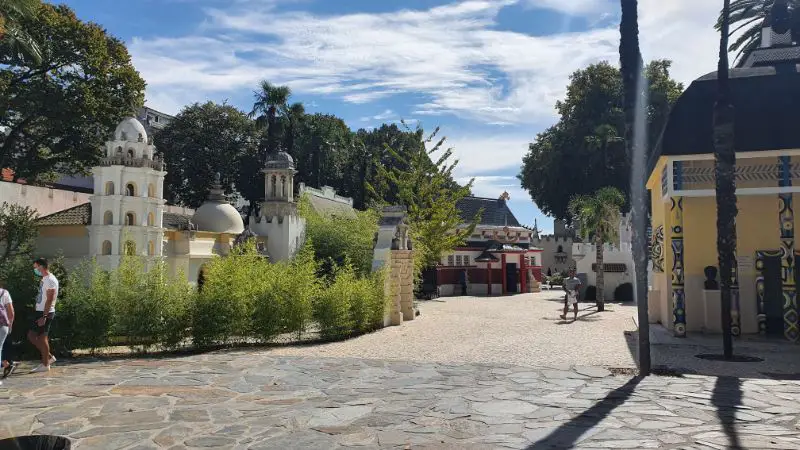
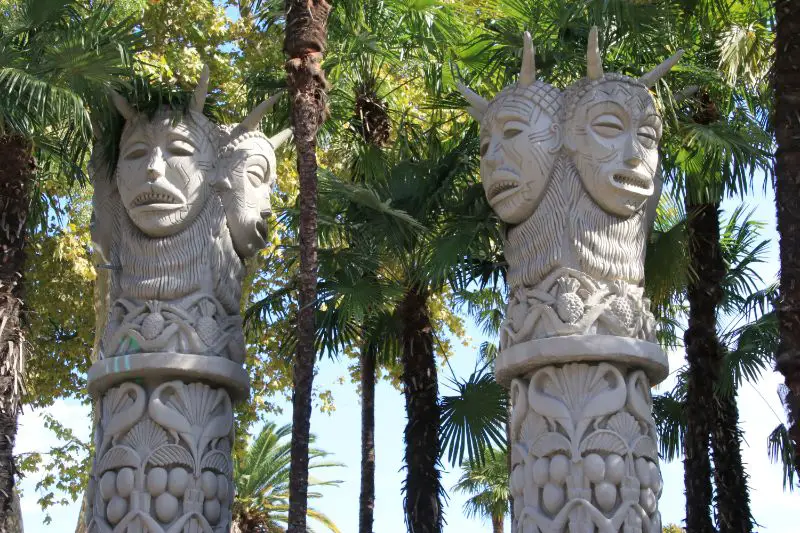
Go on a cruise on the Mondego River
One of the most relaxing things to do in Coimbra is a cruise along its main river, Mondego. You can get some great views over both the old town and university on top of the hill and the lower part of the town. After so much walking, this can be considered a leg-saver and you are still sightseeing.
Relax at Miradouro António Nogueira
If you’ve already been to Lisbon or Porto, you’re already familiar to miradouros and most probably looking for one. Because of its geography, Coimbra also has its own share of places to enjoy the view of the city while having a drink with the locals. Make sure to get there just before the sunset and watch the sun set beyond the river.
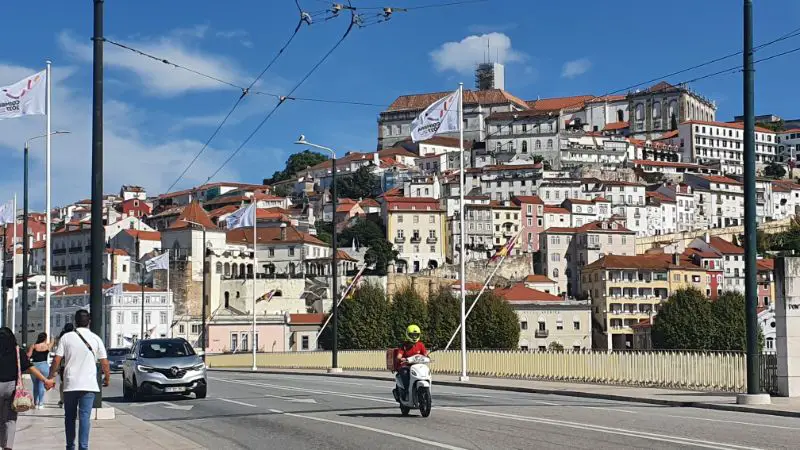
See views and poetry at Penedo da Saudade
Not far from the Botanical Gardens, this rocky garden offers fantastic views over Coimbra. As many other places in Coimbra, this place is also related to the love story of Ines and King Pedro. He would go there and mourn after losing the love of his life. The original name of the park was Stone of the Winds. Over time, students started to come here and leave their mark in the forms of poems on stone plaques. Some talk about love, others lament homesickness, while others commemorate distant events in the university’s past.
Admire the beautiful azulejos on the houses
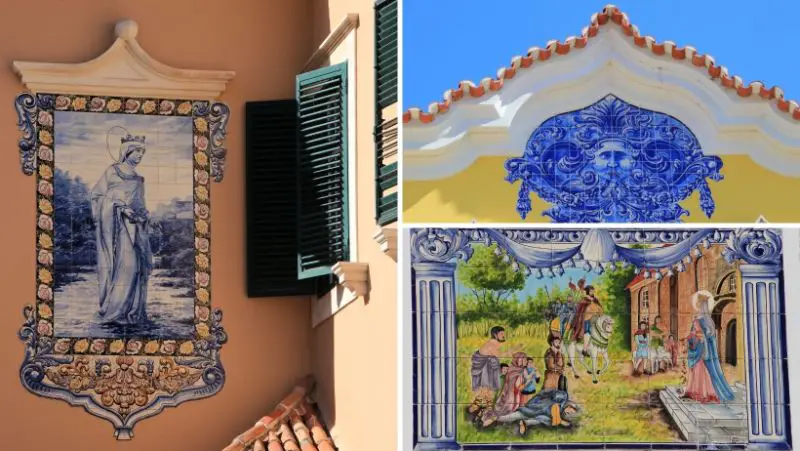
Coimbra is full of decorative details from graffitis to statues, huge green bears and traditional azulejos. While you walk around keep an eye on them. They are indeed wonderful and one can find them everywhere.
Discover Coimbra’s own form of fado
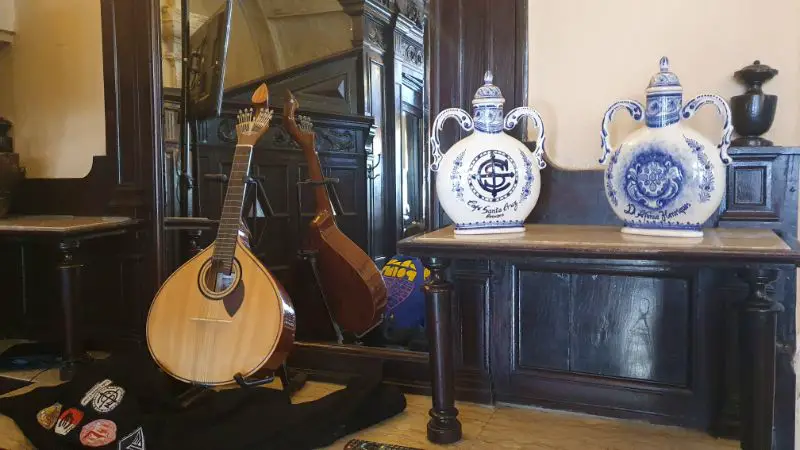
Fado, Portugal’s signature music, originated in the Alfama district of Lisbon and is mostly sung by females. Coimbra, on the other hand, developed its own version, sung exclusively by men. There were no female students back then. Students from around the country met here and brought their regional influences to the city. The young men made serenades for their sweethearts, but they also sung about different aspects of life, politics and knowledge. Attending a fado show is one of the best things to do in Coimbra! The best places to watch one are:
- Café Santa Cruz – a cafe that functions in a former church, the one I also wrote above
- Fado ao Centro – an intimate setting with daily shows where you can also directly talk to the musicians
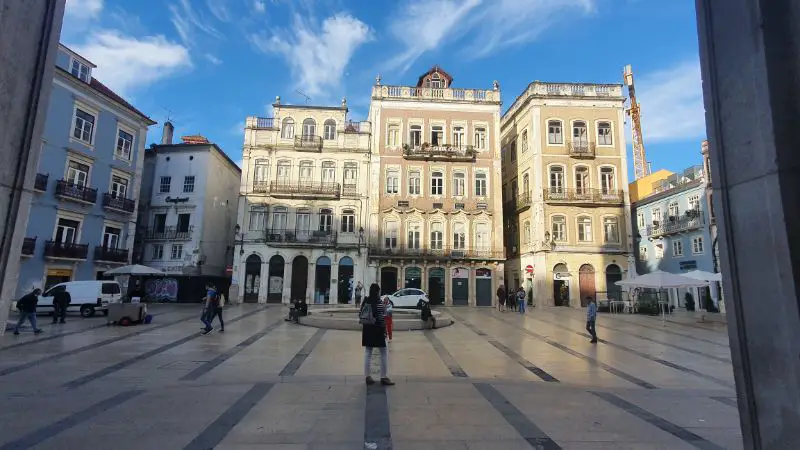
Try some typical Portuguese sweets
In Portugal, the sweets originated mainly in the monasteries. As Coimbra had a plethora of monasteries and convents, the variety of sweet treats it also great. Just take a look at the many pastries in the windows on Rua Ferreira Borges. Some of them will pretty sure make you enter and buy. Even if I doubt your greedy eyes will leave you enough time to consult this list, here are the best known sweets in Coimbra:
- Pastéis de Santa Clara
- Crúzios – only available at Café Santa Cruz;
- Pasteis de Tentúgal – truely delicious
- Pasteis de Lorvão
- Giant meringues
- Nevadas de Penacova

READ ALSO: BEST CITIES FOR A SPRING BREAK IN EUROPE
Attend Queima das Fitas in Coimbra
May is also the month of the greatest student festivities. Queima das Fitas or Burning of the Ribbons marks the end of student life for graduates and the events are spread over a week’s time. This means festivities and parties. First of all, the students sing a fado serenade in front of Sé Velha. Then, they fill the streets with lively colorful parades and burn their ribbons to bring their university days to an end. More beer is drunk during that week that on a week at Oktoberfest. The festivity also takes place in Lisbon and Porto. However, in Coimbra it has even been elevated to a tourist attraction.
If you want to find out more about history, legends and traditions of Coimbra, check out this tour.

How much do things cost in Coimbra?
I’ll start by saying that we’ve been there in September and October 2021. Depending on when you go, these might be different, but this list might still give you an idea of what to expect:
- National Museum Machado de Castro – 6€
- University (including Biblioteca Joanina, Sao Miguel Chapel, chemistry laboratory, tower etc.)- 12.5€
- Botanical Garden – free
- Quinta das Lagrimas gardens – free
- Santa Clara-a-Velha museum – 2€ (But check in advance if they allow you to get close to the ruins or only enter the modern building and see the archeological discoveries at the entrance. When we were there, you could not walk the path to the ruins, even if it was arranged. No reason was given to us. However, you can see them very well from behind the fence.)
- Santa Cruz church – 3€ (or free on Sunday morning, when we got there, before the service)
- Cappuccino or coffee at Santa Cruz cafe – 1.8€
- Portugal dos Pequenitos – 10.5€
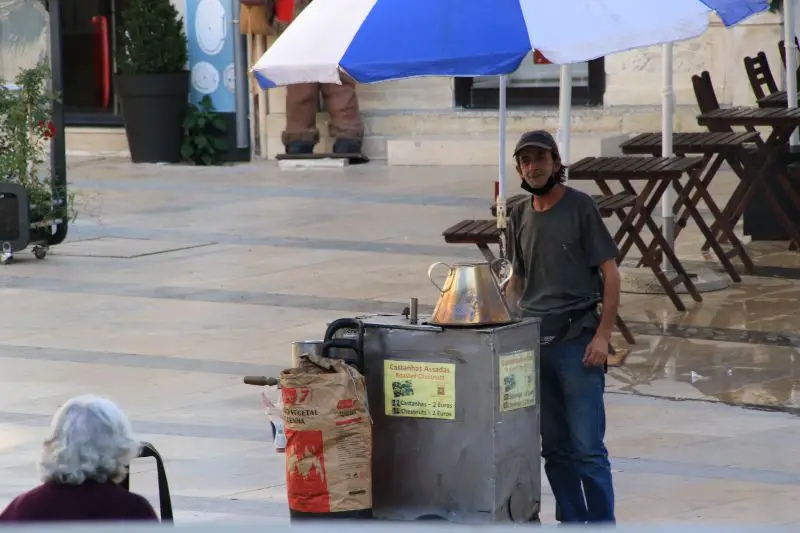
Coimbra is a great city to spend a weekend or two days of your trip to Portugal. There are a lot of beautiful sight and attractive customs and the city will give you the time and the space to enjoy them all, without the crowds in Lisbon or Porto. If you stay longer in Portugal or don’t want to travel from Porto to Lisbon, just head to Coimbra and I’m sure you’ll enjoy it more than you’d think. It is definitely one of the most beautiful places in Portugal and probably my favorite one, next to Porto.
Pin this article for later!
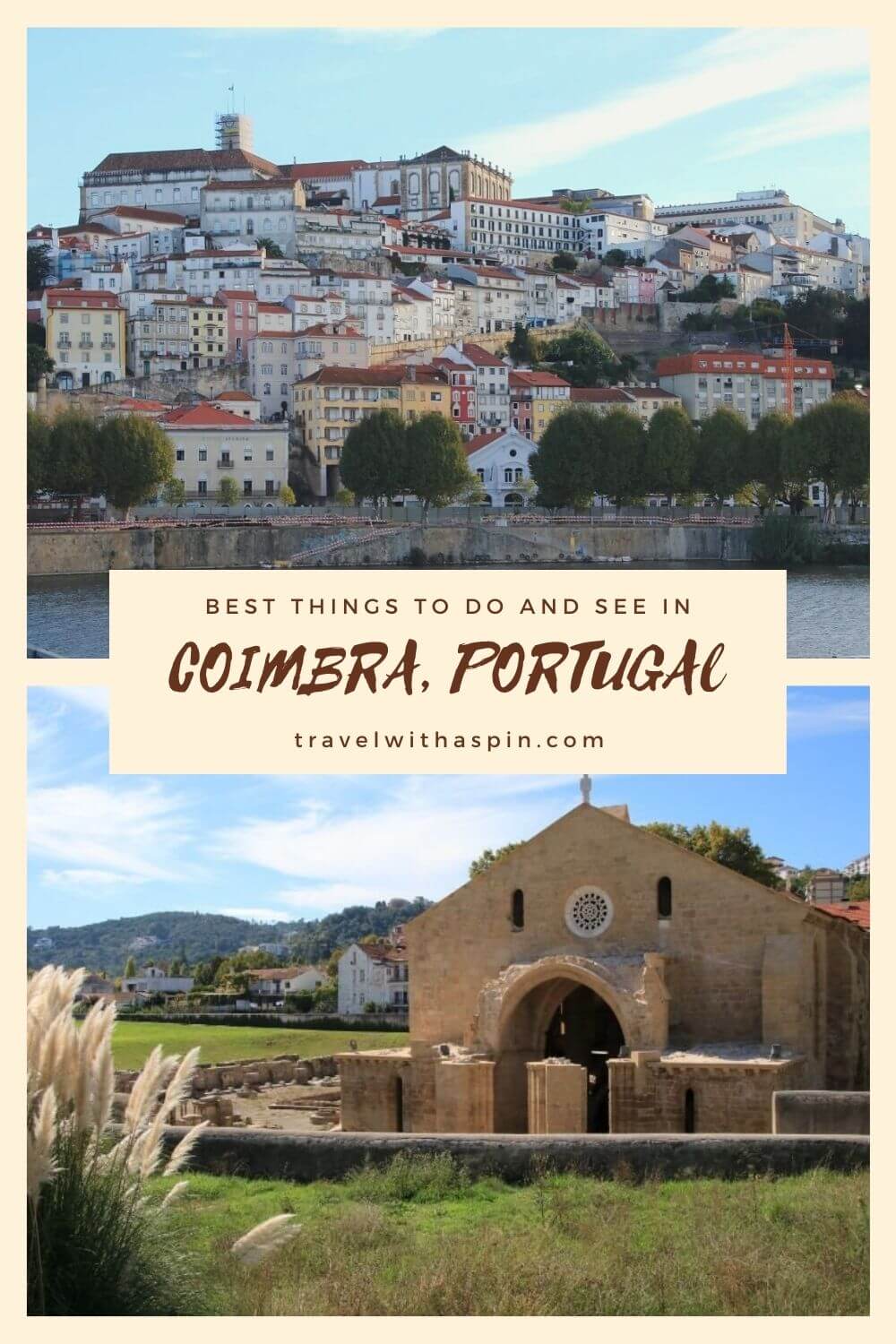
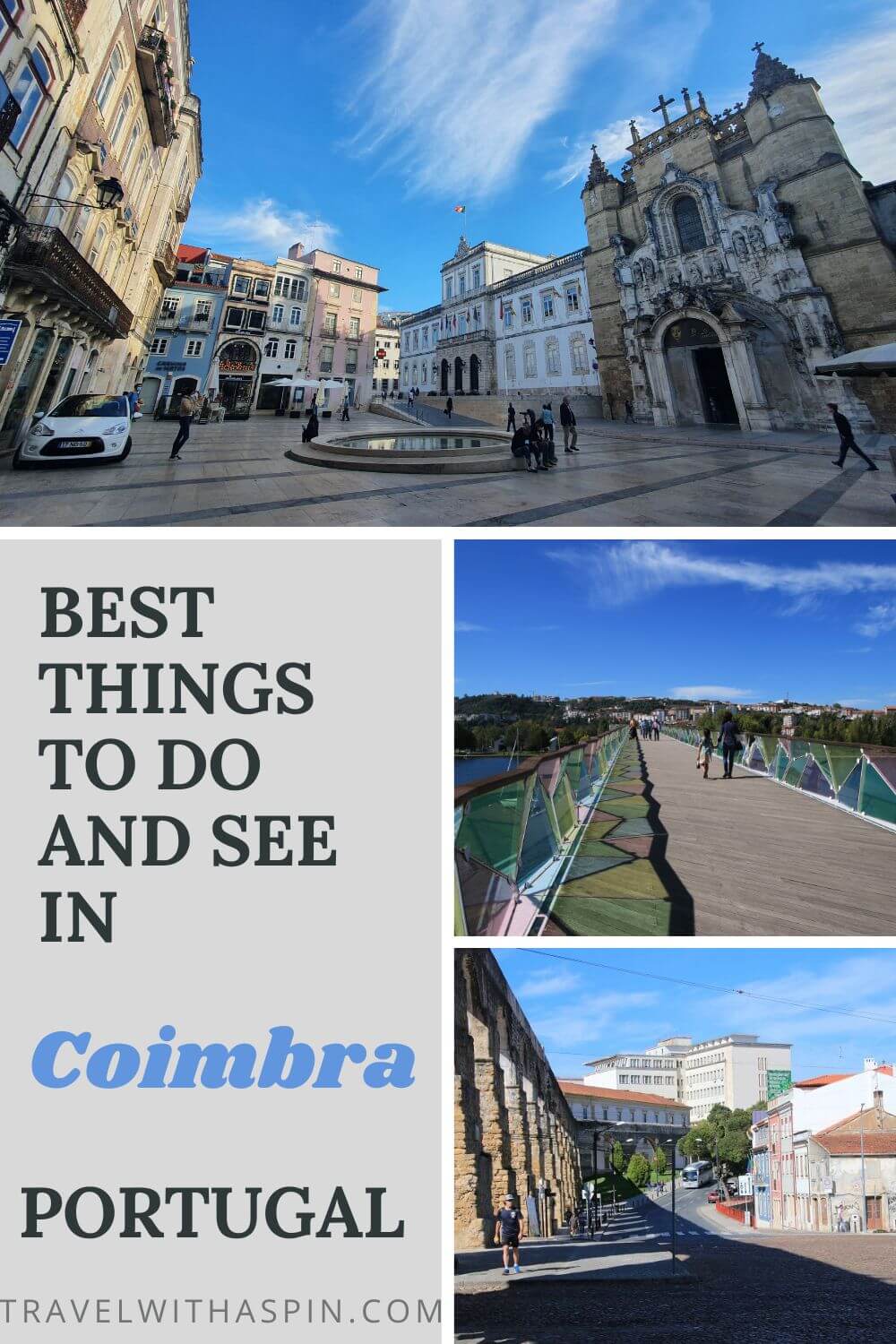
Travel With A Spin contains affiliate links. If you make a purchase through these links, I will earn a commission at no extra cost to you. Thanks for reading!
